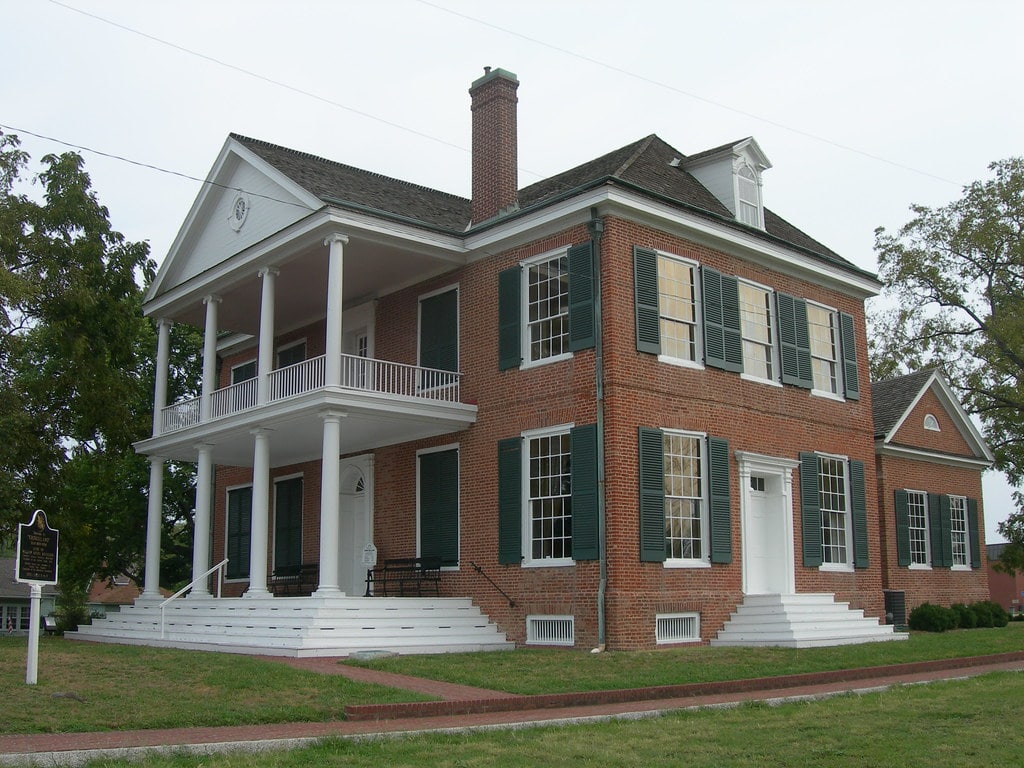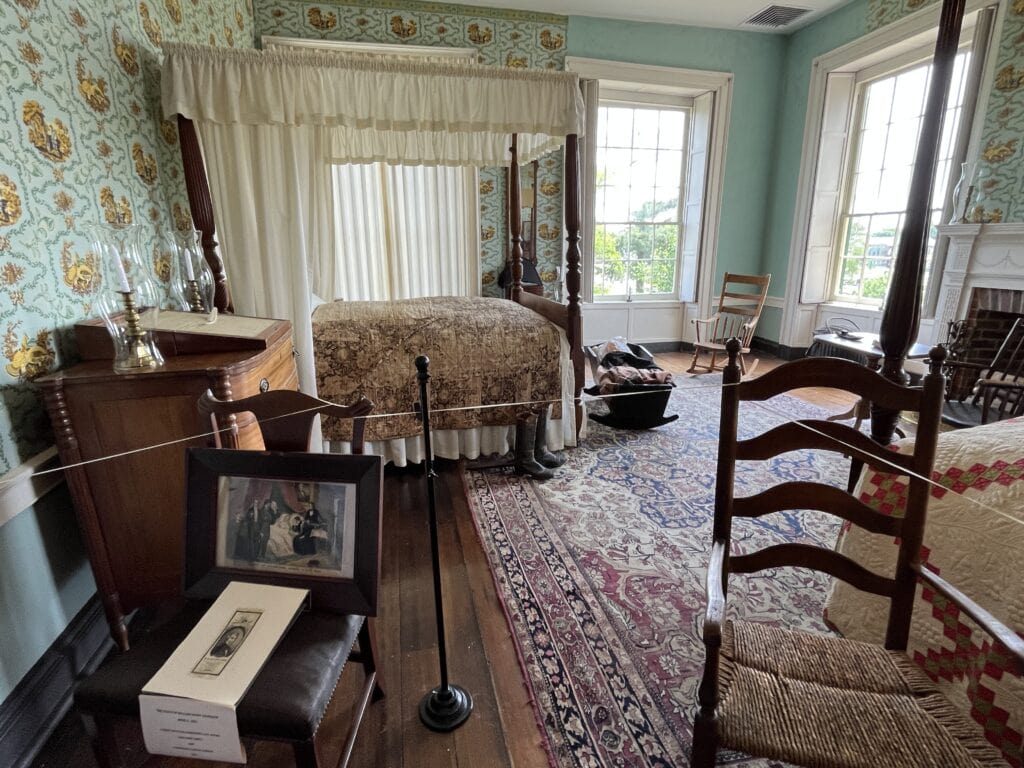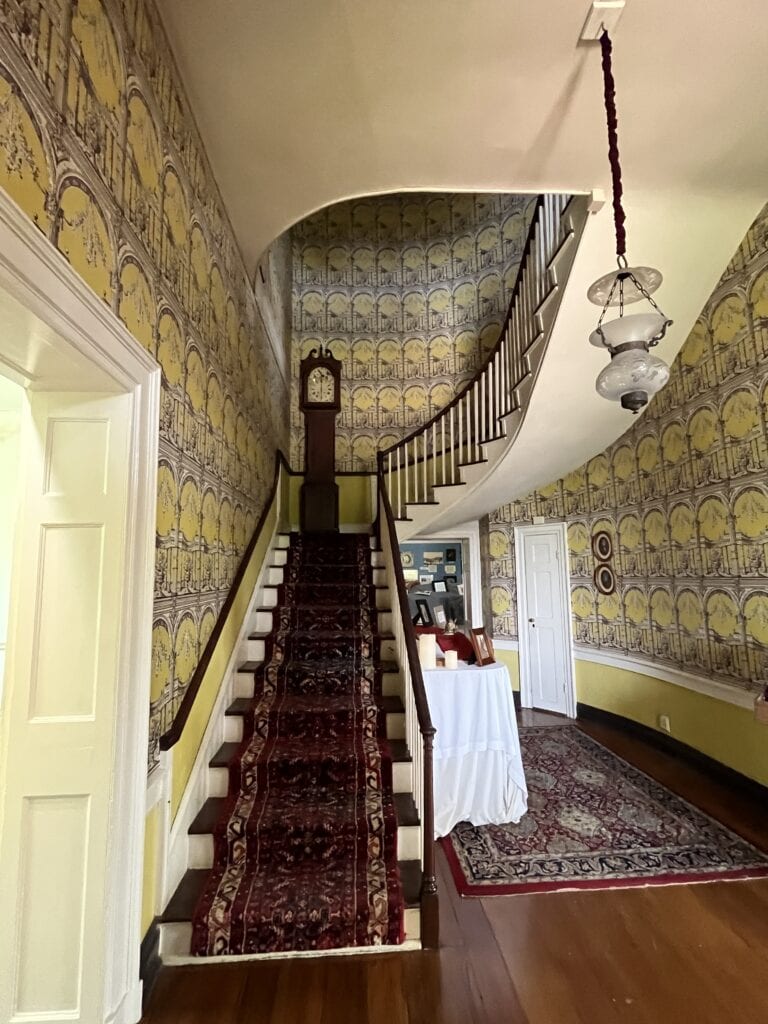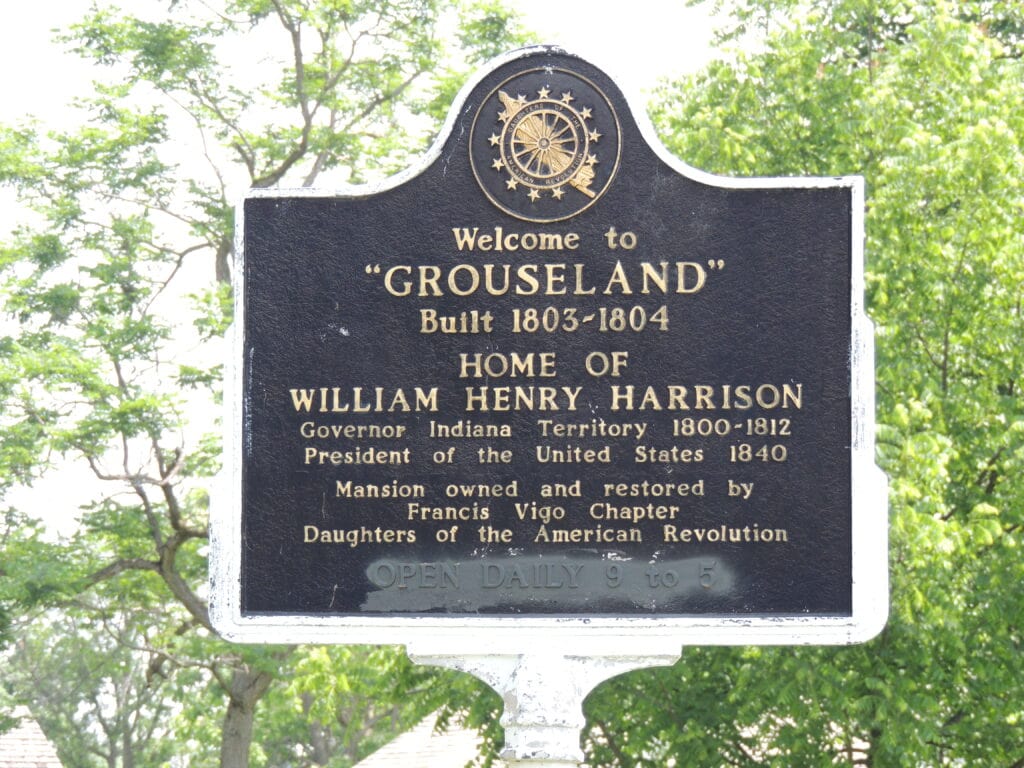The Historical Significance of Grouseland
Grouseland, nestled in the heart of Vincennes, Indiana, is a monumental testament to the rich tapestry of American history. Constructed between 1802 and 1804, this red brick mansion was the brainchild of William Henry Harrison, who served as the first governor of the Indiana Territory from 1801 to 1812.
The residence, completed in 1804, was not merely a home but a beacon of political and social life during a pivotal era in the westward expansion of the United States.
The name "Grouseland" reflects Harrison's connection to the land and its natural abundance, particularly the grouse that populated it. This choice of name underscores a deep appreciation for the territory's natural beauty and resources, a characteristic feature of the era's frontier spirit.
The mansion's construction on 300 acres of land purchased by Harrison adjacent to Vincennes was a bold statement of permanence and civilization in the untamed wilderness of the early 19th century.
Grouseland's architectural style, Federal, was a deliberate choice by Harrison and the architect William Lindsay. This style, reminiscent of the aristocratic homes of Virginia where Harrison spent his boyhood, symbolized a blend of sophistication and authority.
The mansion, costing an estimated $20,000 - a substantial sum at the time - starkly contrasted with the log cabins typical of the region. Its construction employed skilled labor and utilized local bricks, making it a landmark project in the area and possibly the first brick building in Vincennes and the Indiana Territory.
Beyond its architectural significance, Grouseland played a crucial role in the political and social fabric of the Indiana Territory. It was the site of important negotiations and treaties with Native American tribes, shaping the future of the territory and its inhabitants.
The mansion was a hub for legislative activities, entertaining visiting legislators and dignitaries, and was a focal point for the territory's social events.
This blend of political, social, and architectural importance makes Grouseland a key piece of American history, embodying the challenges and triumphs of the nation's early years.
Today, Grouseland is not just a historical site but a gateway to understanding the complex narrative of America's expansion westward. It offers visitors a glimpse into the life of one of the country's early leaders and the intricate web of politics, diplomacy, and family life in the Indiana Territory.
For those interested in exploring more about this fascinating period, things to do in Vincennes, Indiana, include visiting Grouseland to experience firsthand the legacy of William Henry Harrison and the early American frontier.
William Henry Harrison and Grouseland
William Henry Harrison's tenure as the governor of the Indiana Territory was marked by significant achievements and personal milestones, many of which unfolded within the walls of Grouseland.
Appointed in 1801 by President John Adams, Harrison embarked on a mission to lead and develop the territory, a role he embraced with vigor until 1812.
His leadership was not confined to political duties; it extended into his personal life at Grouseland, where he resided with his wife, Anna Tuthill Symmes Harrison, and their children.
During these years, Grouseland was more than a governor's residence; it was a home where Harrison's family grew. At least three of his ten children were born here, including John Scott Harrison, who would continue the family's political legacy as the father of Benjamin Harrison, the 23rd president of the United States.
This period blended public service and private life, showcasing Harrison's multifaceted role as a leader, father, and husband.

After leaving Grouseland in 1812, Harrison's career took him to North Bend, Ohio, where he continued to serve in various capacities, including in the U.S. Army during the War of 1812.
His political journey culminated in his election as the 9th president of the United States in 1840, a testament to his enduring influence and leadership.
Harrison's time at Grouseland and subsequent public service roles underscore his significant contributions to the early development of the United States.
Architectural Marvel of the Frontier
Grouseland's architecture is a testament to the ambition and vision of William Henry Harrison and architect William Lindsay. Constructed between 1802 and 1804, this Federal-style mansion was a bold declaration of sophistication and authority on the Indiana frontier.
The choice of the Federal style, popular in the late 18th and early 19th centuries, reflected Harrison's Virginia aristocratic roots and his desire to bring a piece of that elegance to the Indiana Territory.
The construction of Grouseland was a monumental task, especially considering the remote location and the limited resources available at the time.
The mansion's red bricks were locally manufactured, which is a significant feat given that it was believed to be the first brick building in Vincennes and possibly the entire territory.
This choice of material contributed to the durability and grandeur of Grouseland but also set a precedent for future construction in the region.
The mansion's design included a high roof, dormer windows, and a spacious interior layout with multiple rooms for family living, official business, and entertainment.
The foundation was made of limestone blocks sourced from nearby quarries, emphasizing local involvement in its construction.
The interior was decorated with items imported from Europe, showcasing Harrison's desire to create a home that reflected his status and the respect he commanded as governor.
Grouseland's construction, which Harrison personally paid around $20,000 for, was a significant investment that highlighted his commitment to his role as a leader and settler on the new American frontier.

Grouseland as a Political and Diplomatic Arena
Grouseland played a pivotal role in the political and diplomatic landscape of the early United States, particularly in its dealings with Native American tribes.
As the governor's residence, the setting for numerous significant meetings and negotiations shaped the future of the Indiana Territory and beyond.
One of the most notable aspects of Harrison's tenure was his negotiation of land treaties with Native American tribes. This task often took place within Grouseland's walls.
The mansion hosted discussions with leaders from various tribes, including notable figures such as Little Turtle and Buckongahelas. These meetings were crucial in securing land cessions that expanded the territory available for settlement by European Americans.
Among the treaties signed at Grouseland, the Treaty of Grouseland in 1805 stands out for its importance in alleviating tensions and establishing clear boundaries between Native American lands and those open for settlement.
Harrison's diplomatic efforts at Grouseland were not without controversy. They led to two significant confrontations with the Shawnee leader Tecumseh. The first, in 1810, saw Tecumseh and a large contingent of his followers meeting Harrison on the lawn of Grouseland.
This gathering underscored the high stakes of these negotiations. Although this meeting ended without agreement, it set the stage for subsequent conflicts defining the region's history.
The Evolution of Grouseland
After William Henry Harrison left Grouseland in 1812, the mansion witnessed a series of transformations that reflected the changing times. Its next notable resident was Judge Benjamin Parke, who moved in after Harrison's departure.
By 1821, the property was deeded to Harrison's son-in-law, John Cleves Symmes Harrison, marking the beginning of a new chapter in its history. Under the Harrison family's ownership, which lasted until 1850, Grouseland served as a family home, embodying the domestic life of the era.
The mansion's role in the community continued to evolve in the following years. It found new purposes, such as a grain warehouse, library, hotel, and private residence.
Each of these uses reflects Grouseland's adaptability and importance to the people of Vincennes. The building's survival through these varied roles is a testament to its construction and the esteem in which the community held it.

The transition of Grouseland from a governor's residence to a multifunctional building demonstrates the fluid nature of historical landmarks.
Each phase of its history adds a layer to Vincennes's story and the broader narrative of the American frontier.
Through these changes, Grouseland remained a constant reminder of the past even as it adapted to the present needs.
Preservation and Restoration Efforts
The preservation of Grouseland is a story of community effort and dedication to saving a piece of American history.
In 1909, the Vincennes Water Company acquired the property with plans that threatened the mansion's existence.
However, the Francis Vigo Chapter of the Daughters of the American Revolution (DAR) spearheaded a campaign to save Grouseland from demolition.
By 1916, they had successfully raised $2,000 from the community, a significant sum at the time, securing a limited deed to the property.
This initial act of preservation was the first step in a long journey to restore and maintain Grouseland as a historical museum. The DAR's efforts were instrumental in highlighting the mansion's historical significance and ensuring its survival for future generations.
Their work included restoring the home to its period of relevance when Harrison lived there, including acquiring and displaying Harrison's family possessions.
The City of Vincennes played a crucial role in this preservation effort. In 1935, the city acquired the water company and, recognizing the historical value of Grouseland, gave the DAR a quitclaim deed to the property.
This transfer solidified the mansion's status as a protected historical site and allowed for continued restoration and public education efforts.

Grouseland Today: A Living Museum
Today, Grouseland is a vibrant museum and educational center, inviting visitors to explore the rich history of the early United States and the life of William Henry Harrison.
Owned by the local chapter of the DAR and maintained by the Grouseland Foundation, the mansion is a testament to the community's commitment to preserving its historical heritage.
The foundation, a volunteer board of directors composed of DAR and non-DAR members, oversees the structure and its programs, ensuring that Grouseland remains an active and engaging historical site.
Grouseland's significance extends beyond its architecture and historical artifacts. The mansion hosts a variety of programs and exhibits that bring to life the era of Harrison's governorship and the early 19th-century frontier.
One of the highlights is the Grouseland Rifle, which is owned by the Foundation and exhibited at the mansion. This early 19th-century firearm has been designated the state firearm of Indiana, symbolizing the state's rich historical and cultural heritage.
Adjacent to Vincennes University's main campus, Grouseland is part of a broader historical landscape that includes other state historic sites, such as the Territorial Capitol building.
Its location within the Vincennes Historic District further enhances its role as a key educational resource and tourist attraction, drawing visitors interested in the history of Indiana and the United States.
Through its preservation and educational programs, Grouseland continues to serve as a bridge connecting past and present, offering insights into the challenges and achievements of those who shaped the nation's early history.
